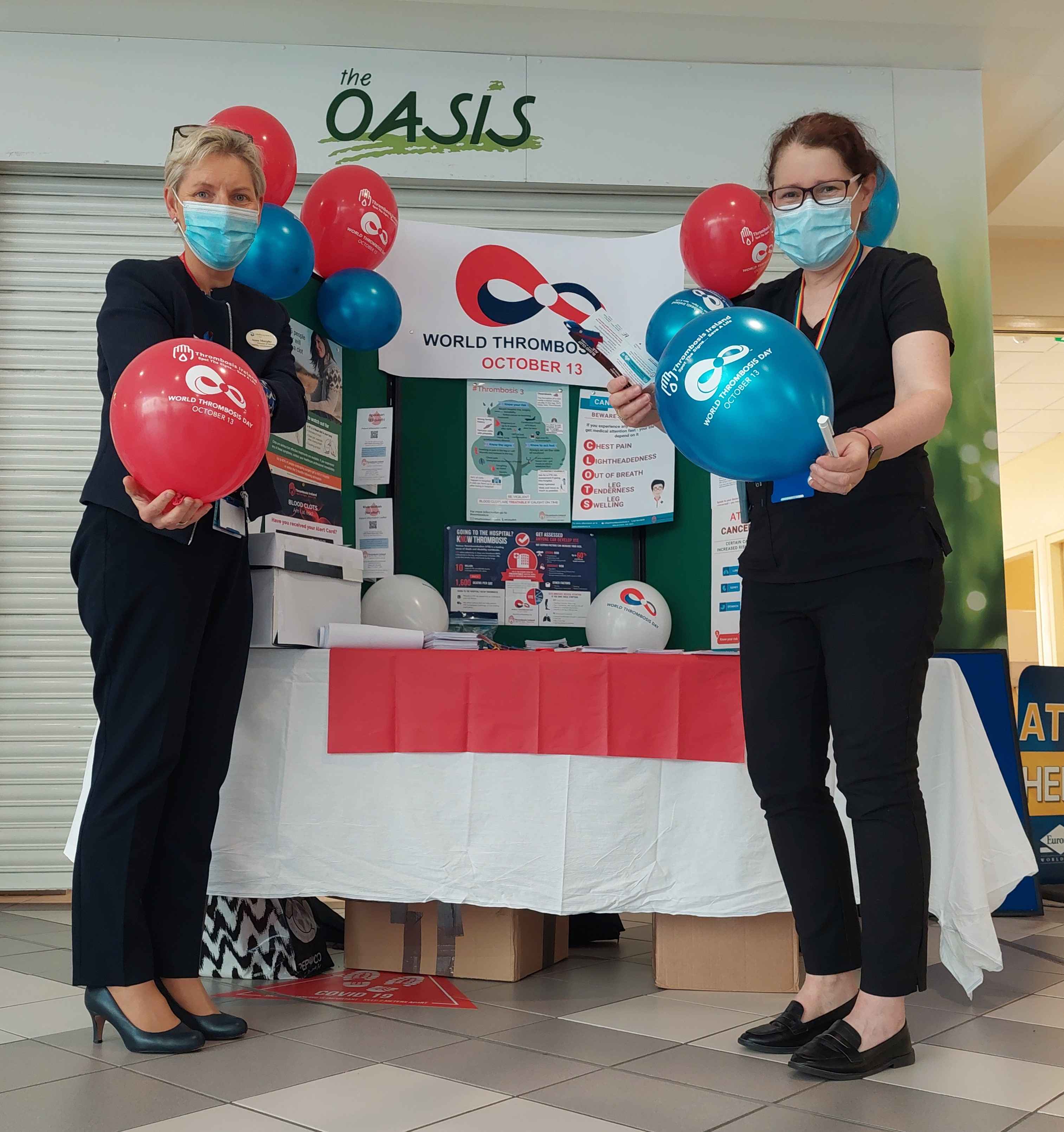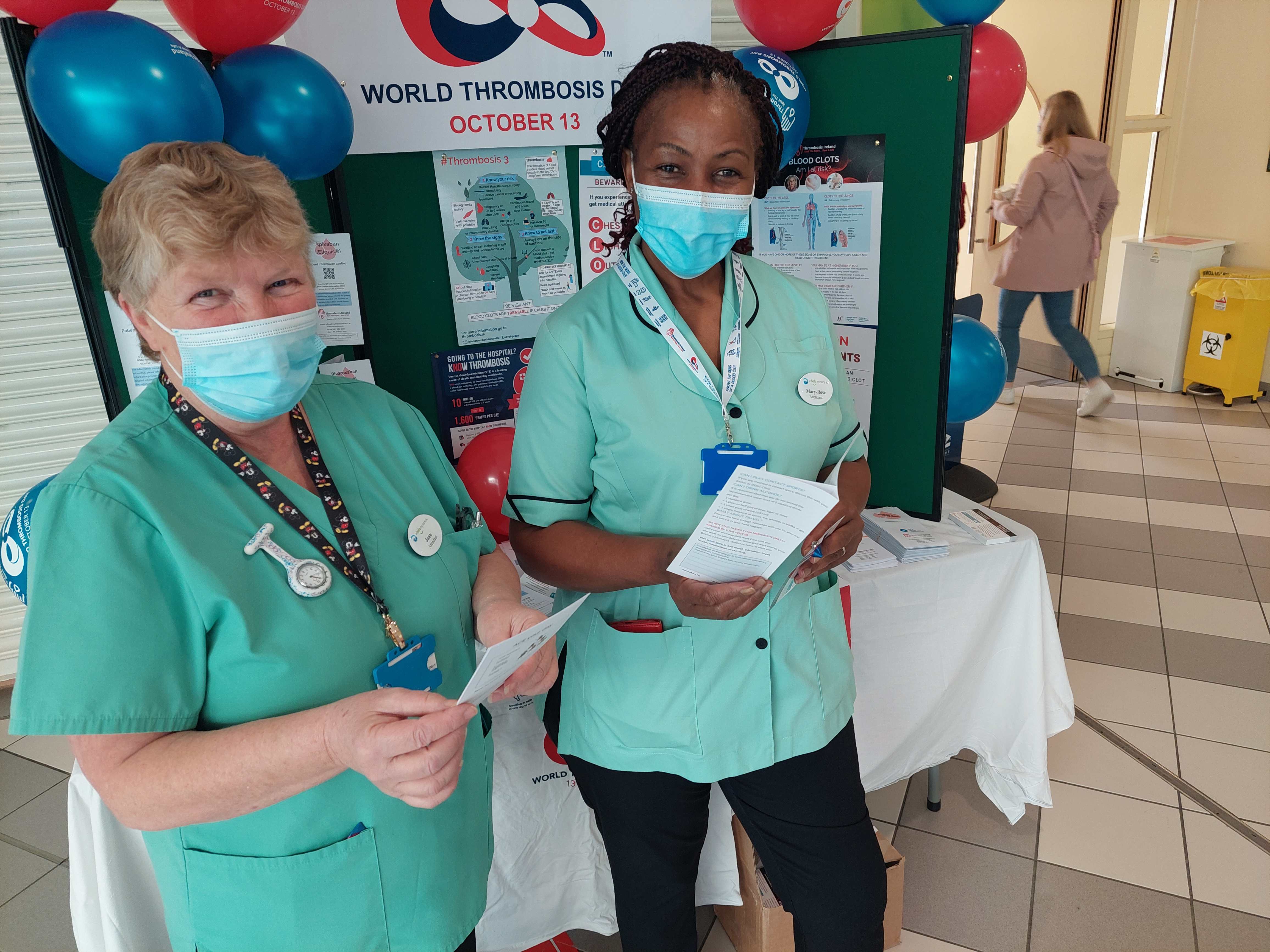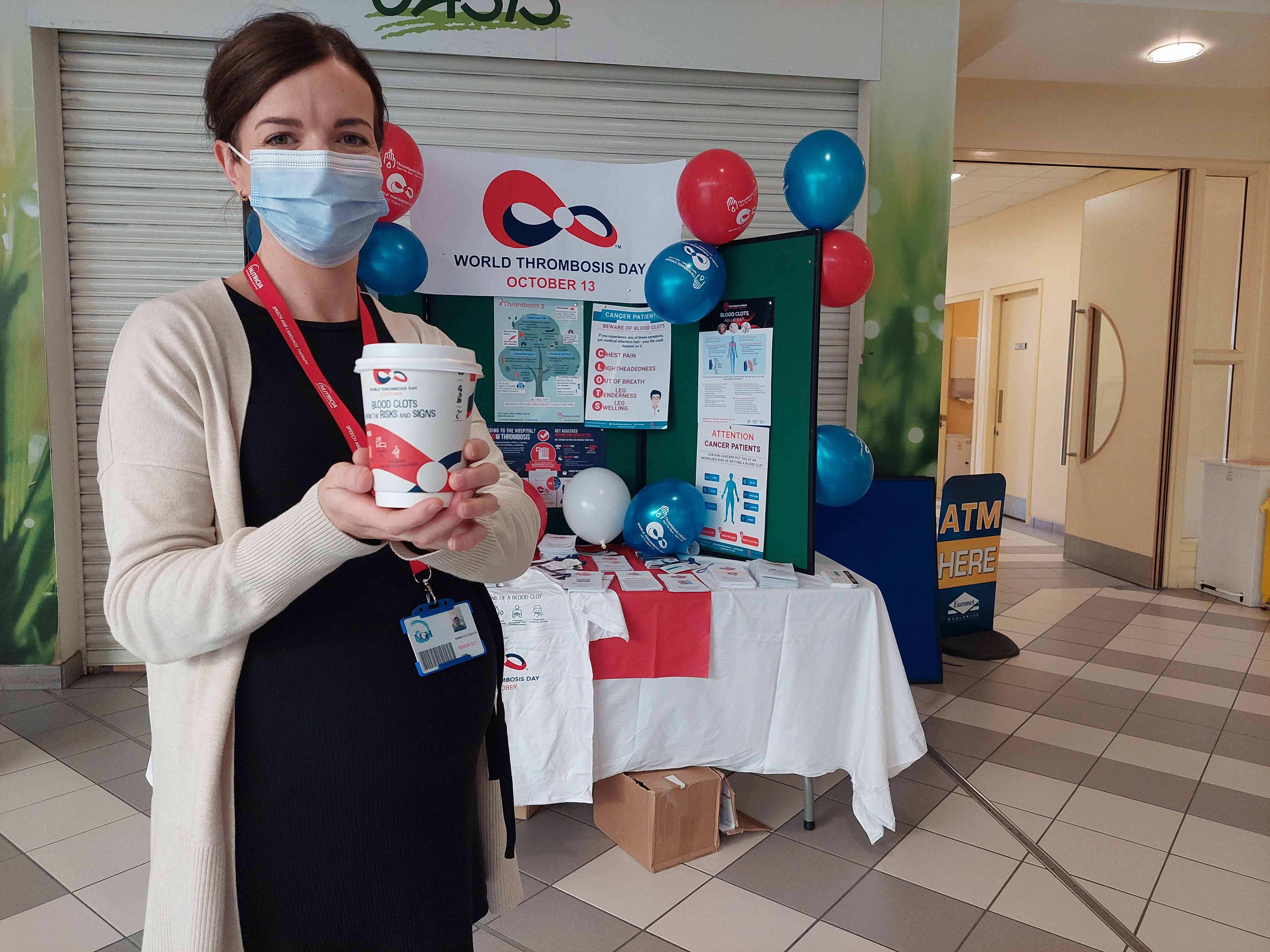Naas General Hospital encourages all to educate themselves on the signs and symptoms of blood clots and act fast this World Thrombosis Day
Today (Thursday 13th) this World Thrombosis Day staff at Naas General Hospital (NGH) are encouraging people to be aware of the signs of blood clots and act fast if they suspect a clot. One in twelve Irish people will experience a blood clot in their lifetime and one in four people who get a clot will die from it.

Blood clots:
- can happen to anyone, young or old.
- are the number one cause of preventable death in Irish hospitals.
- the number one cause of direct maternal death in Irish maternity hospitals.
- lead to the deaths of at least 544,000 Europeans this year alone. That is more than the number of people who will die from a combination of AIDS, breast cancer, prostate cancer, and motor vehicle accidents

Clots are treatable if caught in time. This is the message Naas General Hospital staff are sharing among colleagues and patients today.
The symptoms/signs of blood clots are:
- Swelling or pain in one leg or arm
- Warmth or redness in one leg or arm
- Short of breath or rapid breathing
- Chest pain (particularly when breathing deeply)
- Coughing or coughing up blood
If you experience any of these signs, take immediate action and seek medical advice.
Elaine Harris, Assistant Director of Nursing at Naas General Hospital says, “ Blood clots can be very serious and need to be treated quickly. While staying healthy and active can help prevent blood clots, people should be more aware of the signs of clots if they have cancer, are pregnant, have had a recent hospital stay (in the past 90 days), they are immobile, or if they take a combined pill or oral HRT.”
You are more likely to experience a clot if:
- You spend more than three days hospital and for 90 days after discharge.
- You are pregnant or have had a baby in the past 6 weeks.
- Have active cancer or are receiving cancer treatment.
- Have one or both legs immobilised, for example in a leg cast.
- Are overweight or have a BMI greater than 30.

Other factors which can heighten your risk of clots include increasing age, smoking, using oral contraception or having had a blood clot before.
Anne Murphy, Director of Nursing at Naas General Hospital says, “If you're at risk of blood clots for example if you have reduced activity/ mobility or you are in hospital for more than three days follow the advice of your Doctor about preventing clots. This may involve wearing stockings that improve your blood flow or taking medicine to reduce the risk of clots (anticoagulants). There are also other things you can do to help avoid clots: keep moving even if you’re sick in bed, try to move your legs and feet every 90 minutes and drink plenty of water to avoid dehydration. You should also avoid smoking and drinking alcohol.”
To mark World Thrombosis day, and to shine a light on the risks and symptoms of blood clots, the Kildare County Council office in Naas, alongside 24 other public buildings, will be lit in blue and red, the colours of Thrombosis Ireland.
The HSE and Thrombosis Ireland have developed a Blood Clot Alert Card, to be given to all patients as they are discharged from the hospital.
About Thrombosis Ireland
Thrombosis Ireland was set up in 2016 by Thrombosis patients to provide information and support to fellow Patients and their families. It is the only organisation in Ireland supporting blood clot patients and drawing attention to this neglected condition that is causing death and disability among our population. We also aim to increase awareness about blood clots, risk factors, the signs and symptoms and how important it is to take immediate action.
Visit the Thrombosis Ireland website
Picture Captions:
Picture 1 (Lt to Rt) - Anne Murphy, Director of Nursing, Elaine Harris, Assistant Director of Nursing
Picture 2 (Lt to Rt) - Joan Coleman, Multi-Task Attendant, Rose Koks Multi-Task Attendant,
Picture 3 (Lt to Rt) - Aine Julian, Clinical Nurse Manager 2, Annemarie Maguire, Clinical Nurse Manager 1
Picture 4 (Lt to Rt) - Niamh O'Loughlin, Senior Speech & Language Therapist